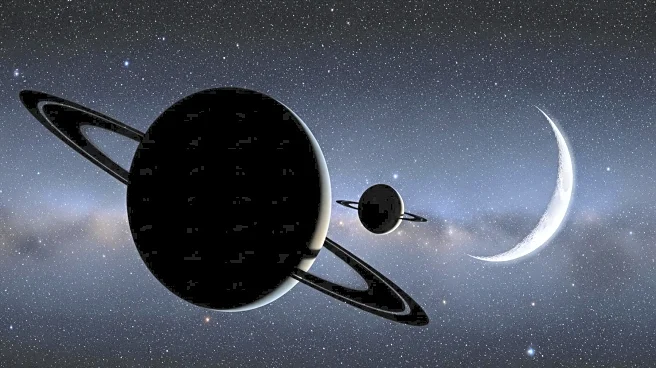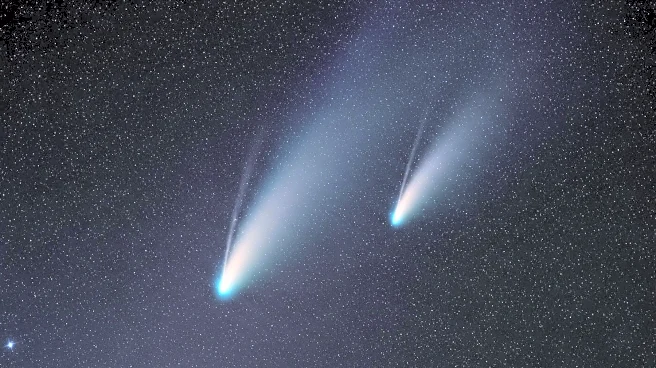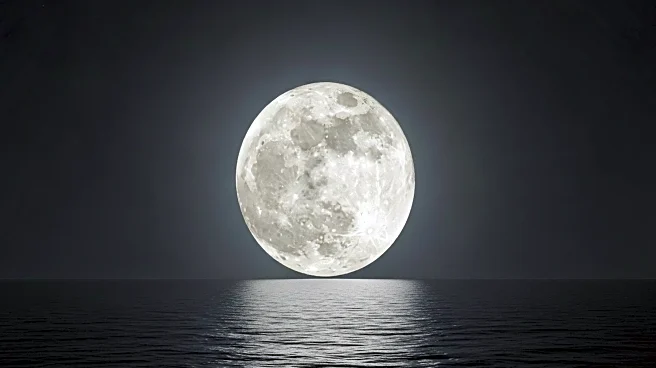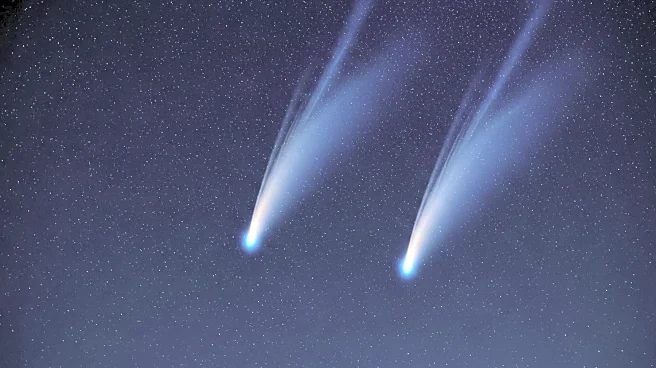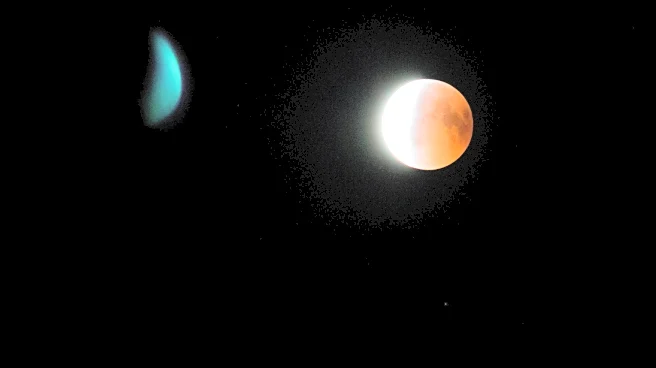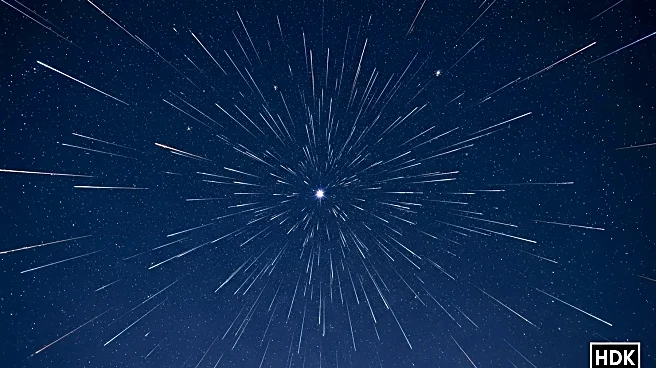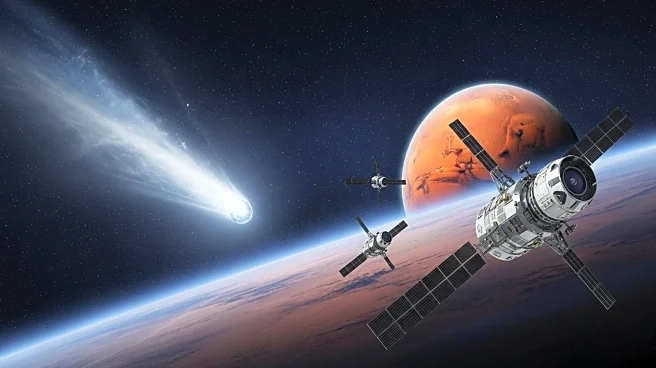What's Happening?
On the evening of October 5, 2025, a rare celestial event will occur as Saturn aligns with the nearly full moon, offering a spectacular view for stargazers. This alignment will be visible around 8 p.m. local time, with Saturn appearing just below the moon. The event provides an opportunity to observe Saturn's rings and the moon's surface features, such as the Tycho and Copernicus craters. While Saturn often appears as a bright star to the naked eye, a telescope will reveal its famous rings, which are currently narrowing from Earth's perspective. This alignment is a highlight for astronomy enthusiasts, as the moon will be 98.5% illuminated, making it a prominent feature in the night sky.
Why It's Important?
This celestial event is significant for both amateur and professional astronomers, as it offers a chance to observe Saturn's rings and the moon's surface features in detail. The alignment serves as a reminder of the vast distances in our solar system, with the moon being approximately 227,000 miles away from Earth, while Saturn is over 797 million miles away. The event highlights the beauty and scale of the universe, providing a humbling perspective on our place within it. For the general public, it is an opportunity to engage with astronomy and appreciate the wonders of the night sky.
What's Next?
As Saturn's rings continue to narrow, their appearance will evolve over the coming years. By 2032, the rings will be at their most tilted, offering a more spectacular view for observers on Earth. This ongoing change in Saturn's rings provides a dynamic aspect to the study of our solar system, encouraging continued observation and interest in celestial events. Future alignments and astronomical phenomena will continue to captivate and educate the public, fostering a deeper appreciation for space exploration and science.
Beyond the Headlines
The alignment of Saturn and the moon also underscores the importance of public engagement with science and astronomy. Events like this can inspire interest in STEM fields and encourage educational initiatives that promote scientific literacy. Additionally, the event highlights the role of perspective in astronomy, as the apparent proximity of celestial bodies is often an illusion created by their alignment from our viewpoint on Earth.

